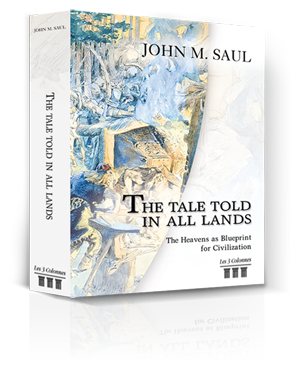 |
| Books | About the Author | Contact | Links | My cart |
John M. SAUL THE TALE TOLD IN ALL LANDS "What shall we do about death?" This one question has haunted humanity from the outset. Looking to the heavens, our most distant human ancestors attempted to attain immortality by projecting what they saw as "undying" into the ways of earth-bound mortals: As Above, So Below. Drawing on years of research and thought, Paris-based American geologist John Saul says that the human adventure has an unsuspected storyline, a structure of its own hidden right before our eyes. Our biological heritage is unbroken. We remain related to our most distant ancestors and have our DNA to prove it. It turns out that our cultural heritage is also unbroken. We continue on paths set by our most distant cultural forebears, the founders of civilizations. Their efforts to triumph over death by applications of the formula "As Above, So Below" have left physical and cultural remnants, evident and obscure, sublime, ingenious, banal and brutal. This is the remarkable story of those remnants. Among the numberless consequences of our heritage from times when astronomy and religion were indistinguishable are the siting of the world's first cities in Mesopotamia, the institution of kingship, "star spots" on the bulls at Lascaux and on the shoulders of generals, tales told of the "Holy Grail", dietary laws, and chess, a game in which the king can never be taken. Included too are the undiminished lust for never-tarnishing gold in utter disproportion to its utility and the enduring desire for jade, "the stone of immortality". Belief in a starry or planetary king of heaven led to the extraordinary idea that one man might legitimately rule over others, even those he did not know. The Tale Told in All Lands treats the glories and the iniquities of our past as products of an unbroken chain of human causes and effects, and helps us better understand why the world is the way it is. September 2013 - 634 pages |
